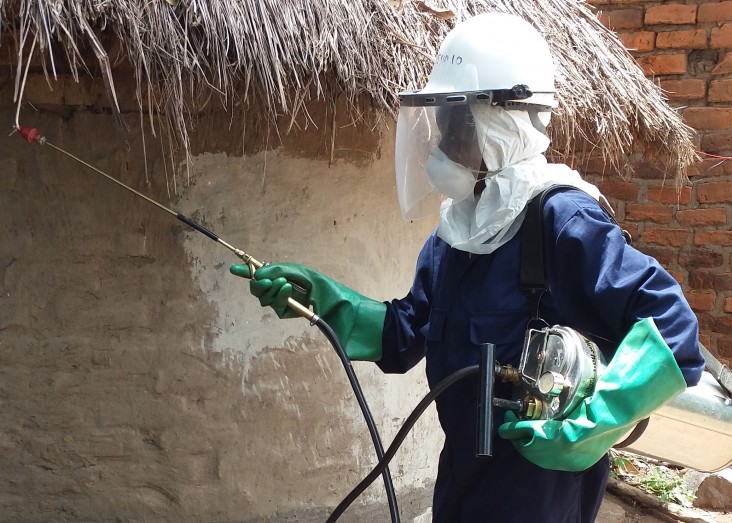Press Release Shim
Speeches Shim

For Immediate Release
On May 25, the U.S. government’s President’s Malaria Initiative (PMI) began the second phase of indoor residual spraying (IRS) in eight high-burden malaria districts in Lango and Teso sub-regions through its VectorLink Project. PMI is led by the United States Agency for International Development (USAID) and implemented together with the U.S. Centers for Disease Control and Prevention (CDC) in partnership with the Ugandan Ministry of Health. Phase two of spraying is expected to last 24 days and will include the following districts: Otuke, Alebtong, Lira, Dokolo, Kaberamaido, Kalaki, Amolatar, and Serere. This second phase of spraying follows a March spraying completed by the VectorLink Project in Butebo, Pallisa, Kibuku, Budaka, Butaleja, Namutumba, Bugiri, and Tororo.
Indoor Residual Spraying has contributed to a significant decrease in malaria prevalence in children under the age of five, lower malaria prevalence during pregnancy and at delivery, improved birth outcomes, and a reduced risk of low birth weight, pre-term birth, and fetal/neonatal deaths. With U.S. government support through PMI, more than four million people in Uganda are protected from malaria every year through indoor residual spraying – 862,536 are children under five years old and more than 119,000 are pregnant women (Vectorlink Project Uganda 2019 End of Spray Report). The project will take all appropriate infection prevention and control (IPC) measures to protect both the spray operators and the beneficiaries.
Since 2006, the U.S. government has worked to prevent and control malaria in Uganda through PMI, helping to reduce child mortality by 53 percent and lowering malaria prevalence among children under five from 42 percent in 2009 to nine percent in 2019 according to the 2019 Uganda Malaria Indicator Survey. In spite of this significant progress, malaria remains a leading cause of morbidity and mortality in Uganda, accounting for 30 to 50 percent of outpatient visits and 15 to 20 percent of hospital admissions, according to Ministry of Health reports. Ongoing efforts are needed at all levels – individual, household, community, and national – to prevent transmission and ensure rapid diagnosis and treatment in order to control the disease.
We encourage everyone in Uganda to utilize the protective measures available, such as insecticide treated bed-nets and intermittent prevention of malaria in pregnancy (IPTp) to prevent the spread of malaria. We all need to work together to embrace preventive measures including IRS in order to reduce the burden of malaria on Uganda’s health systems during a time when it is overburdened with maintaining routine health services during the ongoing COVID-19 pandemic.
We encourage those with questions and concerns about IRS to follow our Facebook and Twitter accounts during this next phase of spraying, while we work to provide accurate research-based information about IRS and dispel rumors and misinformation that often spread in response to IRS activities. For more information about IRS and the upcoming spraying, please see our May 21 Facebook Live discussion and Q&A here.

Comment
Make a general inquiry or suggest an improvement.